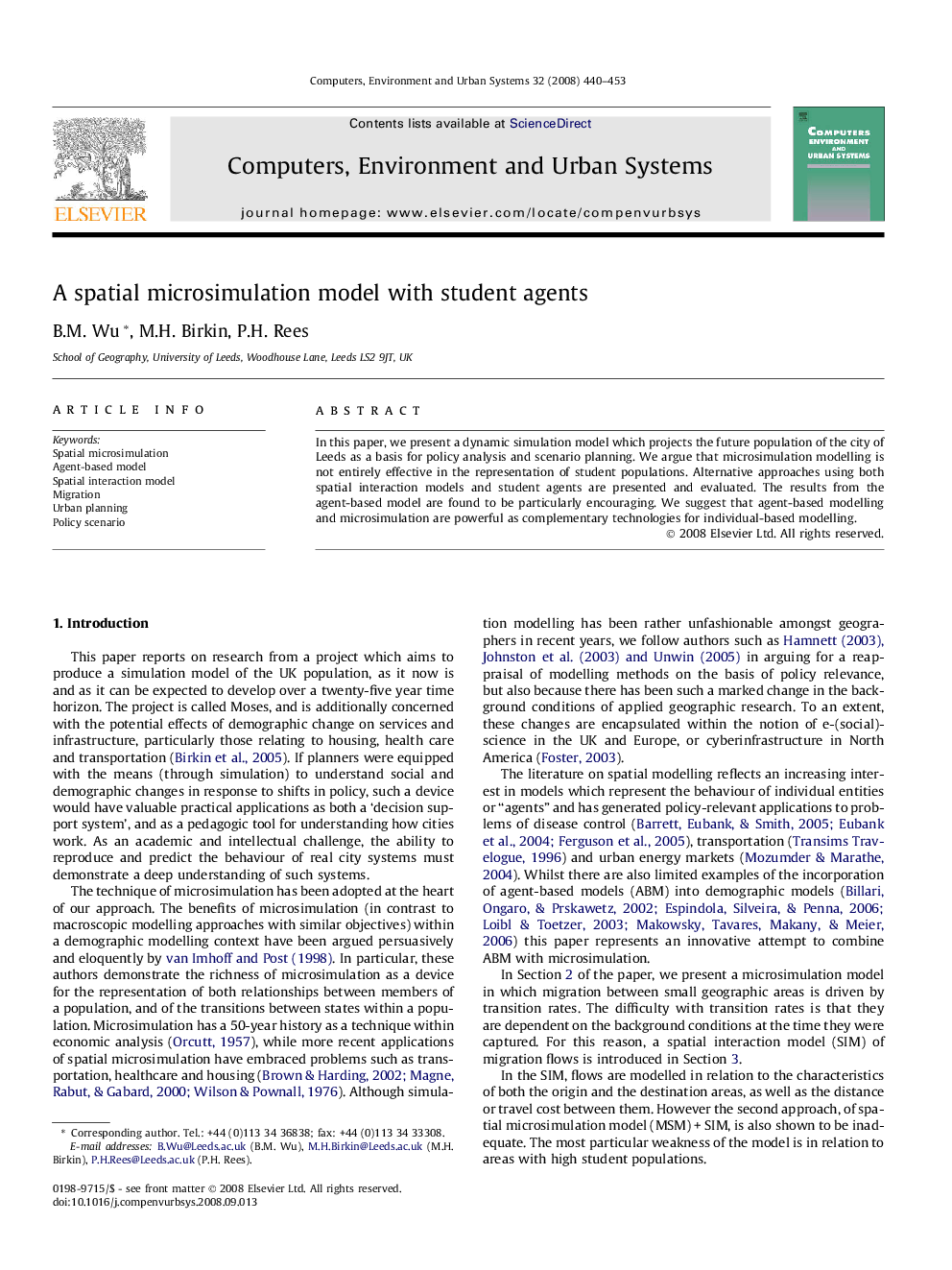| Article ID | Journal | Published Year | Pages | File Type |
|---|---|---|---|---|
| 506737 | Computers, Environment and Urban Systems | 2008 | 14 Pages |
Abstract
In this paper, we present a dynamic simulation model which projects the future population of the city of Leeds as a basis for policy analysis and scenario planning. We argue that microsimulation modelling is not entirely effective in the representation of student populations. Alternative approaches using both spatial interaction models and student agents are presented and evaluated. The results from the agent-based model are found to be particularly encouraging. We suggest that agent-based modelling and microsimulation are powerful as complementary technologies for individual-based modelling.
Keywords
Related Topics
Physical Sciences and Engineering
Computer Science
Computer Science Applications
Authors
B.M. Wu, M.H. Birkin, P.H. Rees,
